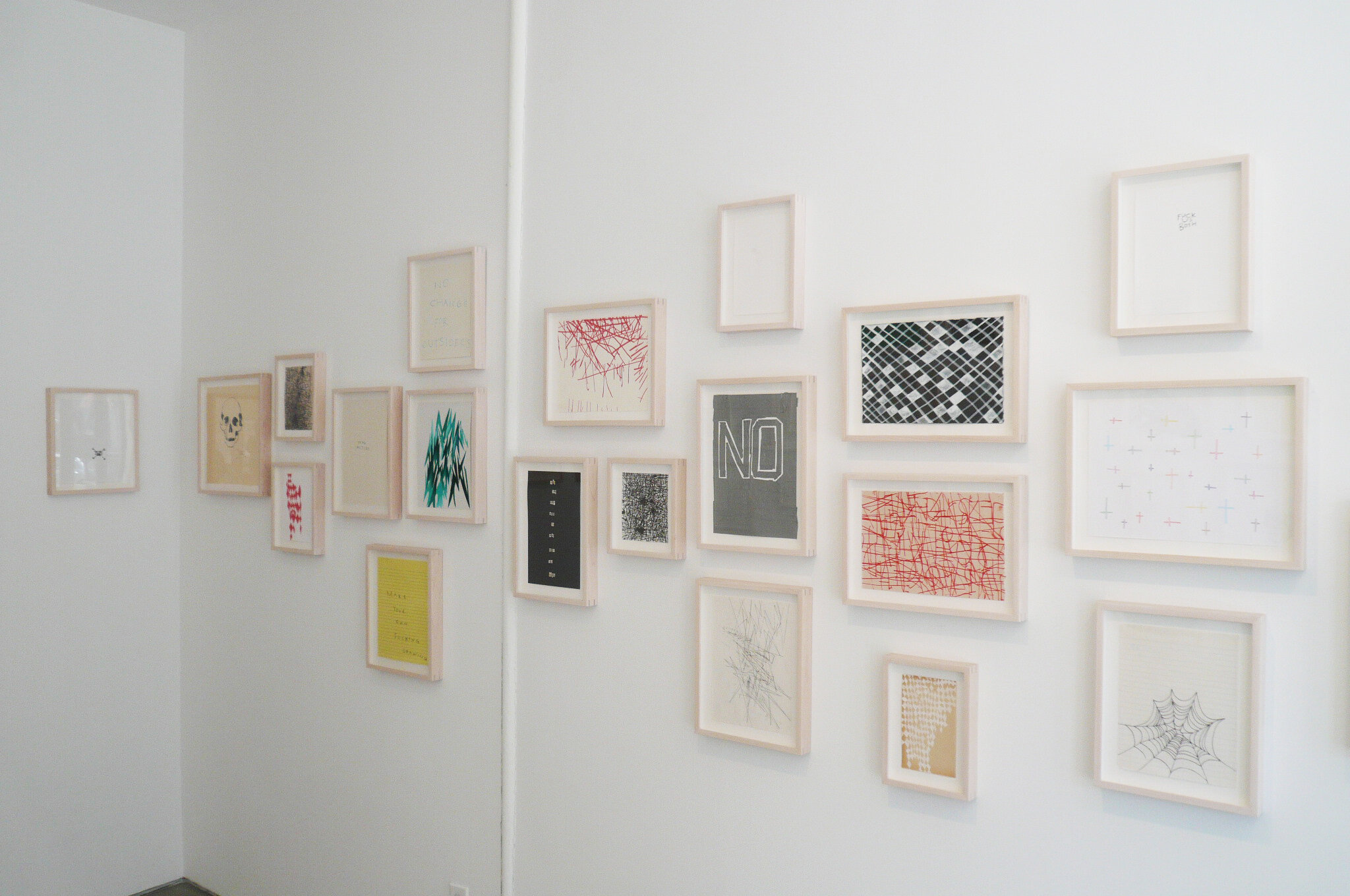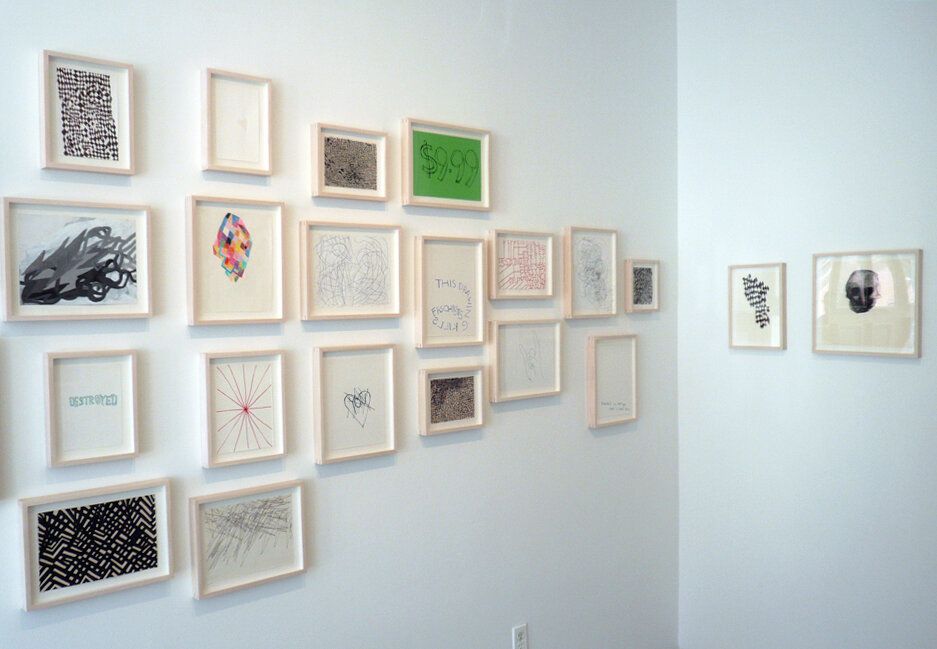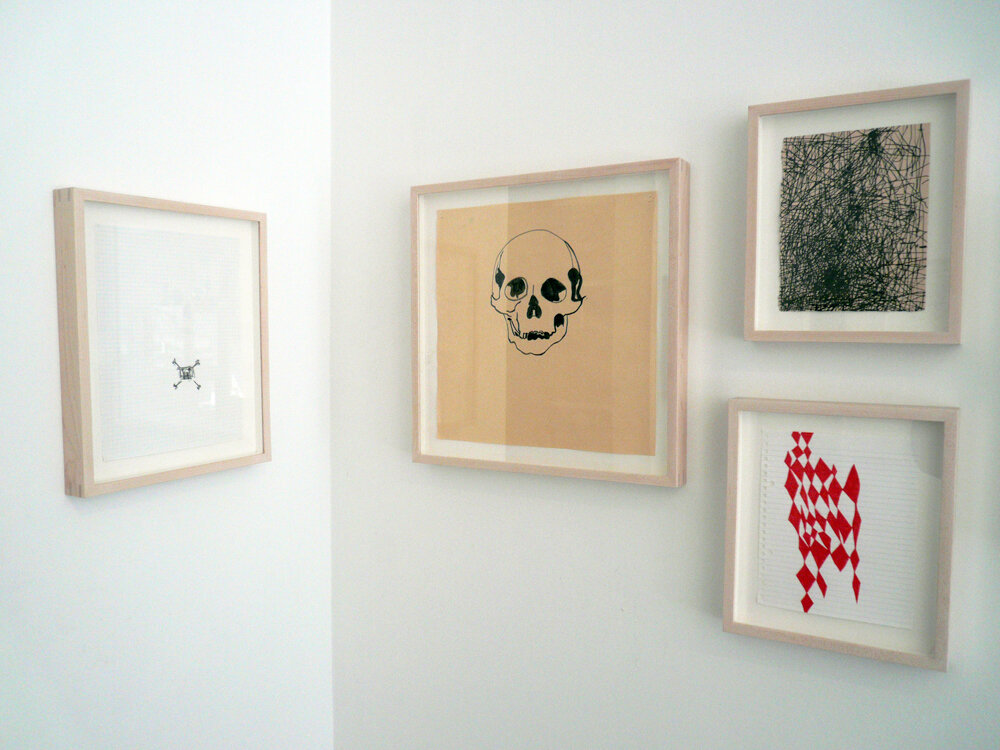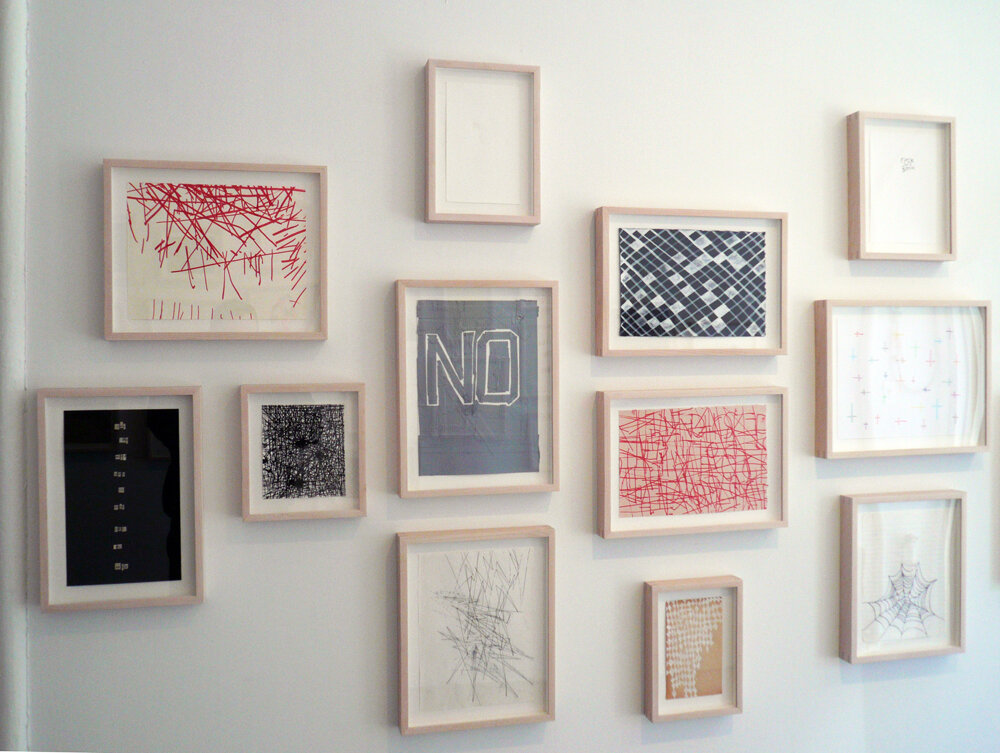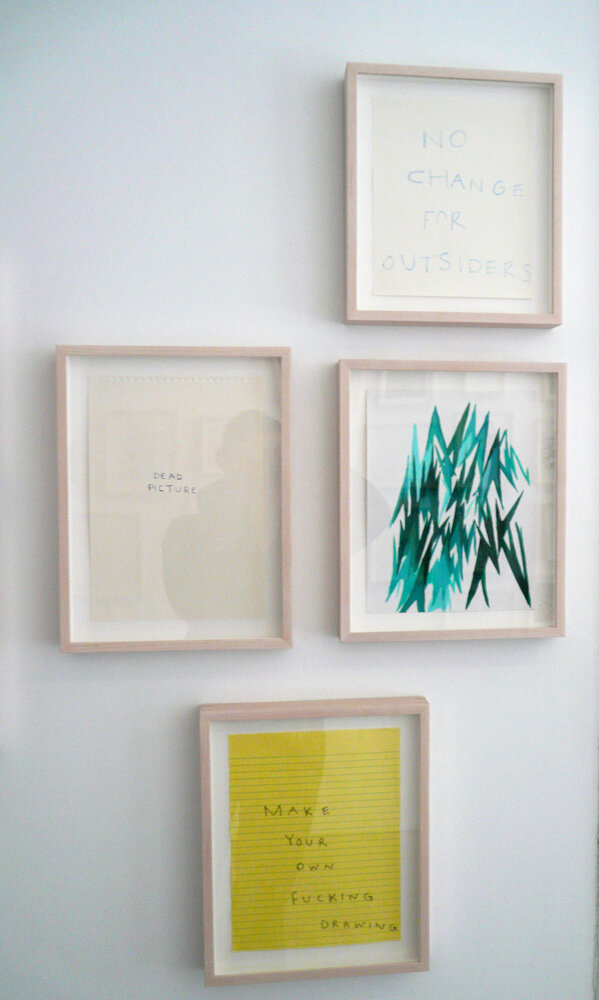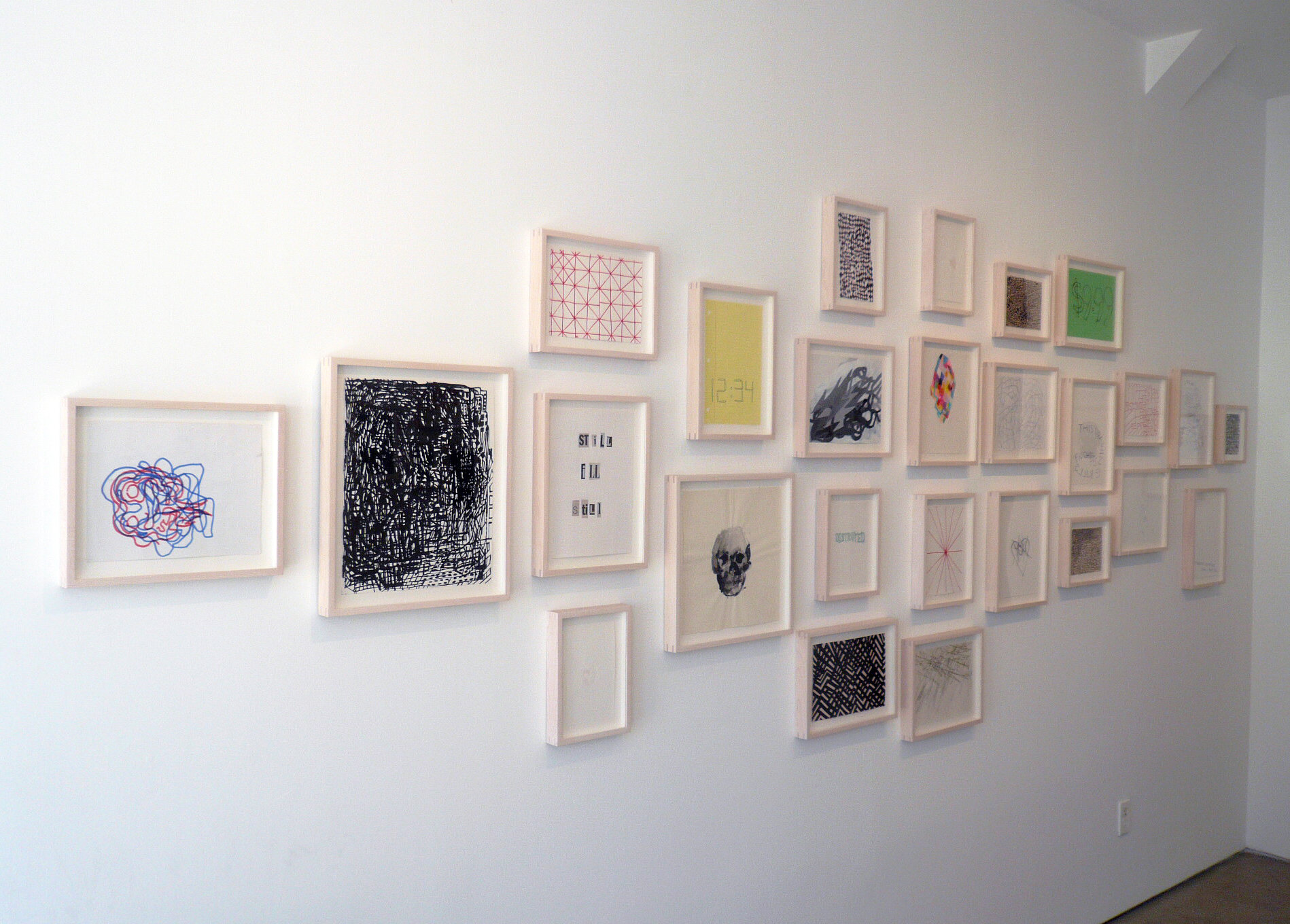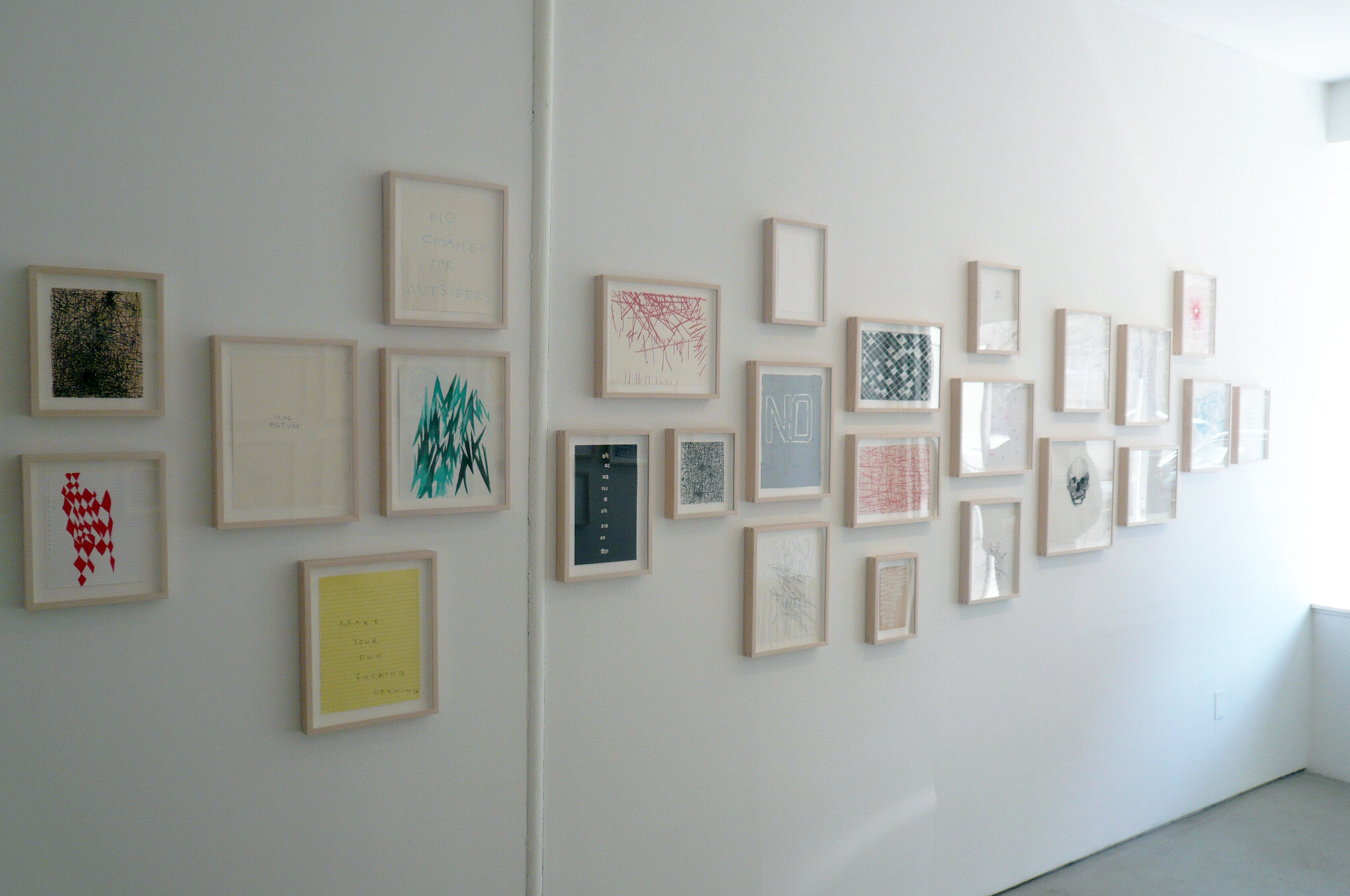Charles Dunn/Gary Rough
December 11, 2009 – January 21, 2010
October, 2009
Dear Charles & Gary
There are those with a virtuous streak who attribute heightened value and worth to notions such as honesty, integrity and fairness. And as a consequence, or perhaps a perk, they view with derision and distain those who register as wayward according to their personal moral compass. Suspicion also extends to those whose behavior, though not discernibly immoral, appears somewhat covert or as a type of subterfuge. And nothing is as shifty as style. Style provides solace from the tyranny of content and conviction “style is a difference, a way of being, a way of being done.” It is the razor edge of the zeitgeist and seldom pretty in hindsight. That unexpected sage of the recent past, Bruce Lee – one who may appear to have labored a style – maintained that he had developed a meta-style: style beyond style. He fought with “no style,” he claimed, for “no style” is in fact the perfect style. Anyone who has been in a bar-room brawl understands the sentiment, style without style may get you out the door instead of style without substance being an elegant way to a broken nose. Style is the retreat to artifice, an affectation, the veil concealing an absence of content. The assumption that being liberated from style one is more forthright, candid, expressive, it becomes conflated to some extent with honesty. But for all its duplicitous conceit style is seductive. And this is why I write to you. I feel some type of dilemma. You are both vultures of style, picking over the bones of the canonical remnants. It is not the sophomoric riff of kitsch postmodern doggerel; as there is an unexpected honesty, pathos and compulsion in the work. It is potent with the intent and intensity of a meeting of abject nihilism and generosity. And unexpectedly there is honesty and a moral compulsion and sentiment which proceeds by implicating the entire structure and form of the drawing, it stupefies until you cry out into the night, “make your own fucking drawing.”
For both of you style is a core aspect of content and substance. Your drawings are a visual equivalent to the melody heard on the radio which continually repeats through your head long after the song has ended. An ability borne from the work being simultaneously novel and familiar. Allusion and illusion are conveyed with a poise and posturing that implicates and references cultural tropes such as skulls, shop signs, geometric modernist paintings and love hearts. The presence of these signifiers is not without complications. In the drawings the tropes don't fully comply with their usual structure and intention. Instead they often betray an emotional subtext of despair and apathy. At times looking is uncomfortable; like prying into a diary. The conflict and emotion is laid bare but without the backstory, it can be confusing how a drawing should be understood. How literally are we supposed to take a text drawing which proclaims the picture dead? Is this some form of pragmatic contradiction or is it prophetic? Instances, like this declaration, imbues the work with an air of futility. Yet this absence of utility is not a symptom of a missing attribute but rather a testament to the necessity of art. Plato sought to demonstrate the necessity for keeping art out of his ideal republic. Artists were the creators of third generation counterfeits of the ideal form, artists were the purveyors of lies. Their creations were not merely without utility but were deceptions that could elicit emotional responses. Real tears flow for entirely fictional characters, and the gods were shown doing un-divine acts. But unlike modernism's response, to make art the thing in and of itself, a thing beyond reference, rather these drawings are closer in effect to the passage in B.S. Johnson's novel Albert Angelo where the author breaks the narrative stream to address the reader directly and proclaim: “OH, FUCK ALL THIS LYING”. Where Johnson took the self-reflexive approach these drawings proceed through the lyricism and pathos of the ordinary, yet both approaches result in a contraction of distance, the artist is immediately present and proclaiming their honesty.
With this backdrop it may be felt significant that the chosen means of expression is that of the drawing. For within the confines of art, drawing is often held with peculiar deference, it is seen as that most romanticized artistic juncture, the moment where thought is made material. It is a quasi-religious turning of inspiration into presence. However you both seem untroubled by such pretensions. The page culled from a cheap notebook tells nothing but the time, or words plead at the foot of the page to an unknown lover. Obvious and universal in their unadorned composure but adrift from their specific referential circumstance. Likewise, labyrinthine scribbles that coalesce into near impenetrable densities are material artifacts of time: the killing of time. This blunt approach to drawing is a testing of the surface, the material, and sense; gaffer taped legends and ink soaked pages contain an entirety and resolve nothing. Not here at least, divorced as they are from the world of their making. Words clipped from a newspaper to generate a phrase unencumbered by the direct presence of the artist's hand tell of a form of biblical piety, it is the perfect form of the contemporary gothic. It is the ghost of attempts to declarative purity but with an unshakable malevolence of form. The drawings represent the stupor of modernism's eulogizing to solve the problems, to provide the solutions, and smooth out the differences. Looking at those harlequin squares which lose momentum and dissipate as they approach the paper's edge, it appears as if they are caught in the very act of giving up on the modernist commandment for all-over surface treatment.
Perhaps due to this gothic quotient, my thoughts while looking at these drawings have repeatedly turned to Dürer's engraving, Melencolia I. Its depiction of the humoral condition of the black bile, which manifested in a morose and listless disposition seems achingly familiar in this context. The similarity is not limited to this atmosphere of anguish and despondency but you appear to share Dürer's apparent conception of melancholia as not being entirely negative. It was rather the point of creative potential, the juncture between the human and the ideal. As Panofsky saw it, it is the artist's dilemma, the pitting of theory against practice, of what is imaginable and what is realized, he termed it “Melancholia artificialis.” Here again the perpetual specter of artifice in art reappears, and its intractable presence at the heart of Melencolia's despair. And within this existential turmoil the appearance of geometry is of particular significance. Geometry is one of the seven liberal arts, in the Dürer etching, it is evidenced by such things as a truncated cube, a set of compasses, and a sphere. These symbols, bring the connection between the melancholic condition and this liberal art, central to which, is that both geometry and the rising of black bile are both governed by the planet Saturn. So, Rough and Dunn, I envisage you two as new troubadours of this melancholic land of Saturn – Neo-Saturnalians perhaps – indulging in the decadent excesses of the Roman festival Saturnalia but more specifically singing the Dürer tinged dirge of this enlightened despair. The recurrent motifs of futility and dissent echo with Beckett's refrain: “ah if no were content to cut yes's throat and never cut its own”. It is a culture of refusal, one which comprehends the dilemma of the inherent incommensurable nature of art which necessarily progresses through failure but within the very same act is also generative of a new set of meanings and relationships.
I recall one of you, I forget which, talking of your work being “on the edge of boredom.” This could sound like a criticism, or an admission of a shortcoming, but I don't believe that such interpretations were intended. Perhaps it is more an admission of the uncomplicated and familiar nature of the work. Boredom's position as an existential universal makes it common to us all, and it effects how we relate to ourselves. I suspect that you'd be tempted to side with Heidegger's comment that “boredom reveals being as a whole.” Boredom is without the oppressive atmosphere of anxiety but its acute individualized nature forces us to engage with the fundamental aspects of ourselves. These drawings are like postcards from the edge. Redolent in conviction, compulsion and ennui they affirm the essential human character: we creators of the universe and we are nothing.
Io, Saturnalia!
gavin

